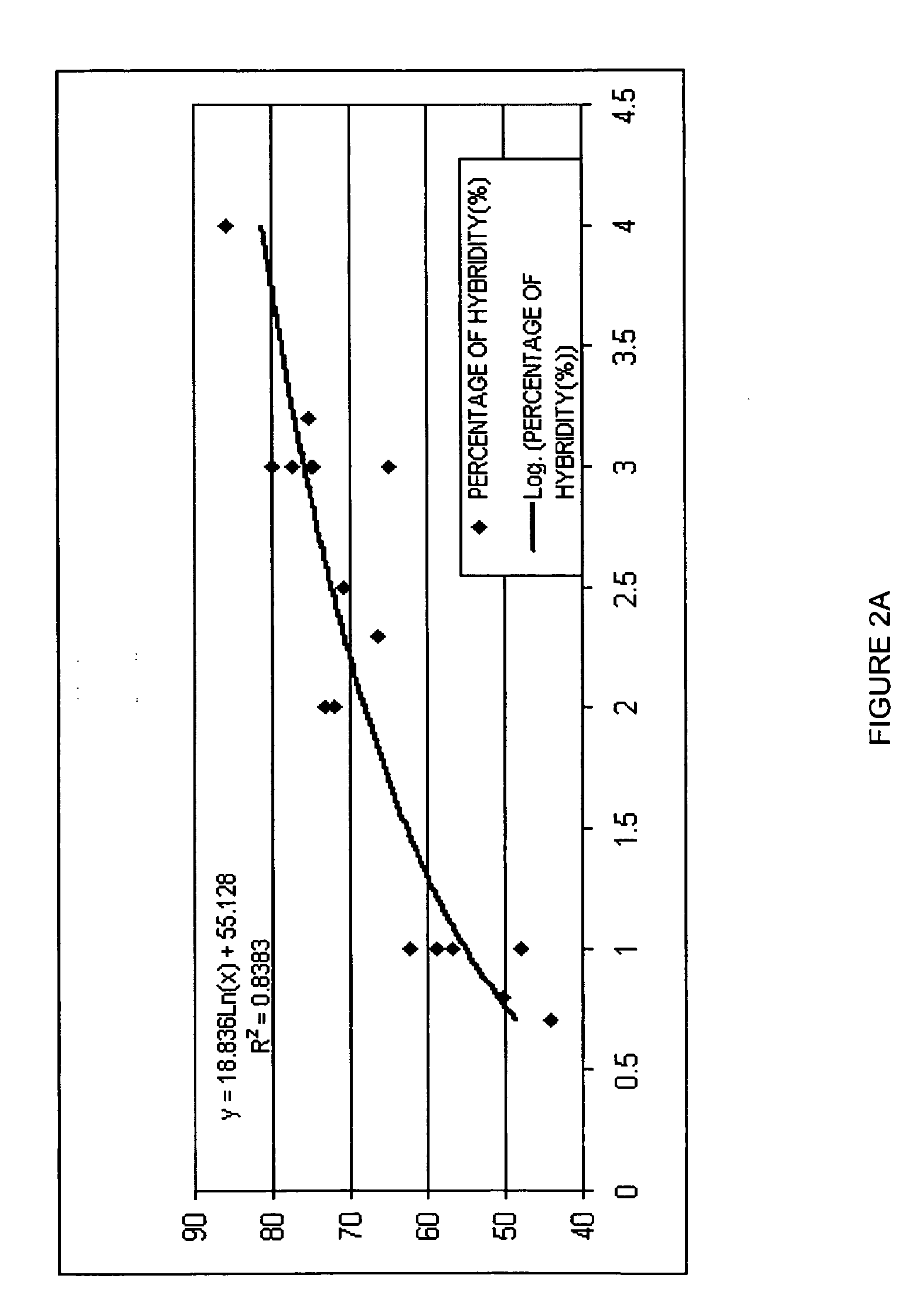Methods for producing a hybrid seed product
a technology of hybrid seed and seed product, which is applied in the field of hybrid seed product production, can solve the problems of affecting the yield of individual plants, affecting the quality of individual plants, and presenting particular challenges to hybridization of species, so as to achieve a higher percentage of non-hybrid seed and increase the percentage of hybrid seed. the effect of hybridity
- Summary
- Abstract
- Description
- Claims
- Application Information
AI Technical Summary
Benefits of technology
Problems solved by technology
Method used
Image
Examples
case 1
[0132]If the P.P.I. of the hybrid seed production field is larger than the P.P.I. of the test plot hybrid seed, the following formula will be used to calculate the percentage of hybridity.
The seed from a hybrid seed production field contain both hybrid seed (female×pollenizer) and non-hybrid seed (pollenizer). The seed from test plot of f:p=1:0 contains only hybrid seed.
% of hybridity=1-P.P.I. (Production seed) / 1-P.P.I. (Test plot hybrid seed)×100-CF a
Sample size of growouts=200−2000 plants from each population (production seed and test plot hybrid seed) at the same environment and same location. b
case 2
[0133]If the P.P.I. from the hybrid seed production field is similar to the P.P.I. of the test plot hybrid seed, then seed size distribution differential between hybrid seed and pollenizer seed or some morphological traits or molecular markers that can differentiate hybrid seed from non-hybrid seed from grow outs need to be used to verify the percentage of hybridity.
PUM
| Property | Measurement | Unit |
|---|---|---|
| distance | aaaaa | aaaaa |
| seed size | aaaaa | aaaaa |
| seed size distribution | aaaaa | aaaaa |
Abstract
Description
Claims
Application Information
 Login to View More
Login to View More - R&D
- Intellectual Property
- Life Sciences
- Materials
- Tech Scout
- Unparalleled Data Quality
- Higher Quality Content
- 60% Fewer Hallucinations
Browse by: Latest US Patents, China's latest patents, Technical Efficacy Thesaurus, Application Domain, Technology Topic, Popular Technical Reports.
© 2025 PatSnap. All rights reserved.Legal|Privacy policy|Modern Slavery Act Transparency Statement|Sitemap|About US| Contact US: help@patsnap.com



